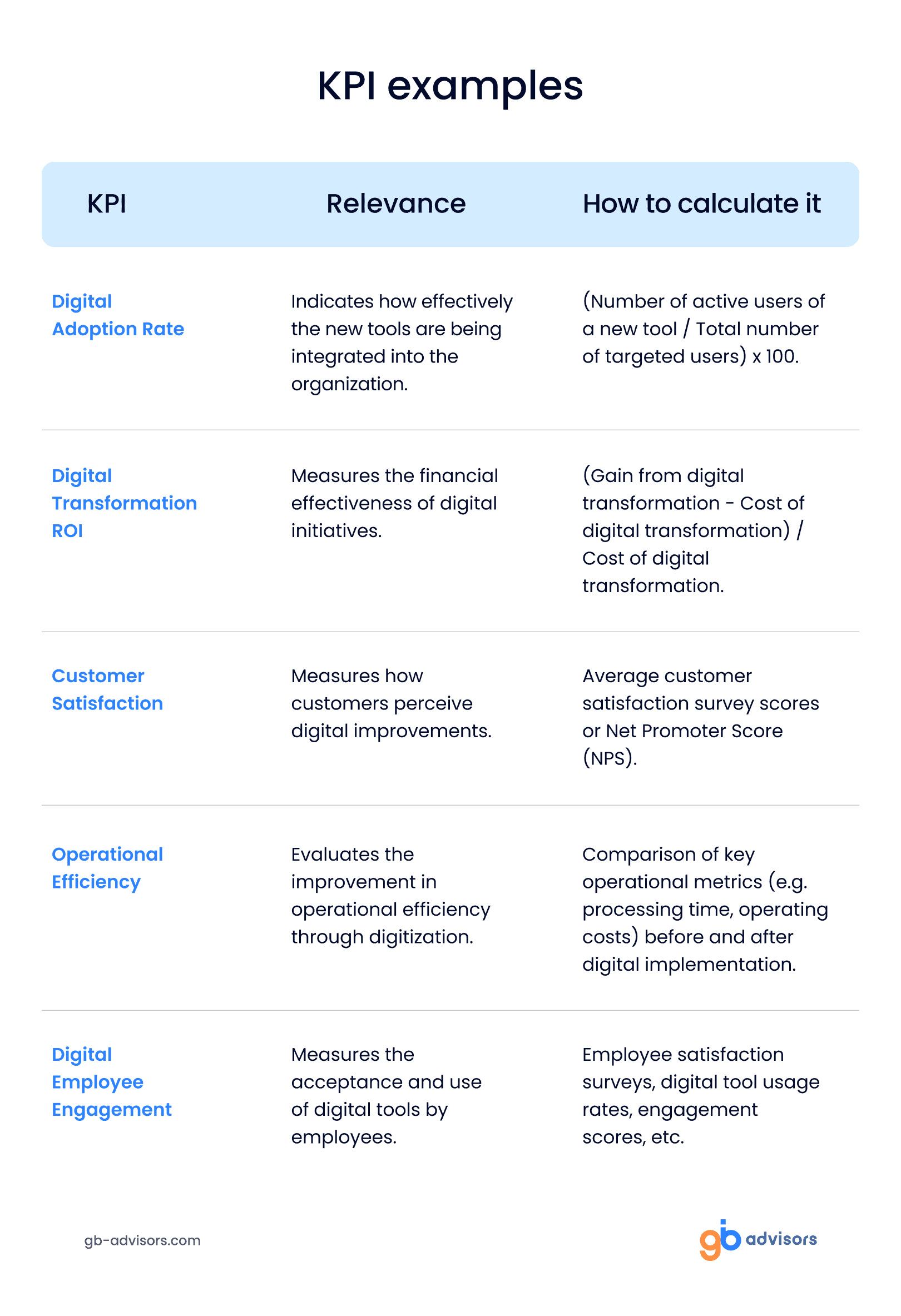In the last decade, the business world has seen the birth of a new universe of digital applications and solutions. Although each of these tools works differently, they all have the same goal: to help organizations achieve a successful digital transformation.
However, to carry out this change efficiently, companies must develop an action plan and implement strategies that help them understand their current environment.
To help you overcome this important challenge, in this blog post we will take an in-depth look at what this change consists of and show you some strategies that will help you complete this process.
What is a digital transformation?
Digital transformation is a comprehensive process that involves redefining an organization’s operations, strategies, and experiences through the innovative use of digital technology.
Unlike technological transformation, which focuses on the adoption of new technological tools or systems, digital transformation requires a profound change in culture, business processes, and how the company relates to customers and employees. In other words, it involves not only the implementation of technology but also the reinvention of the organization in a digital environment.
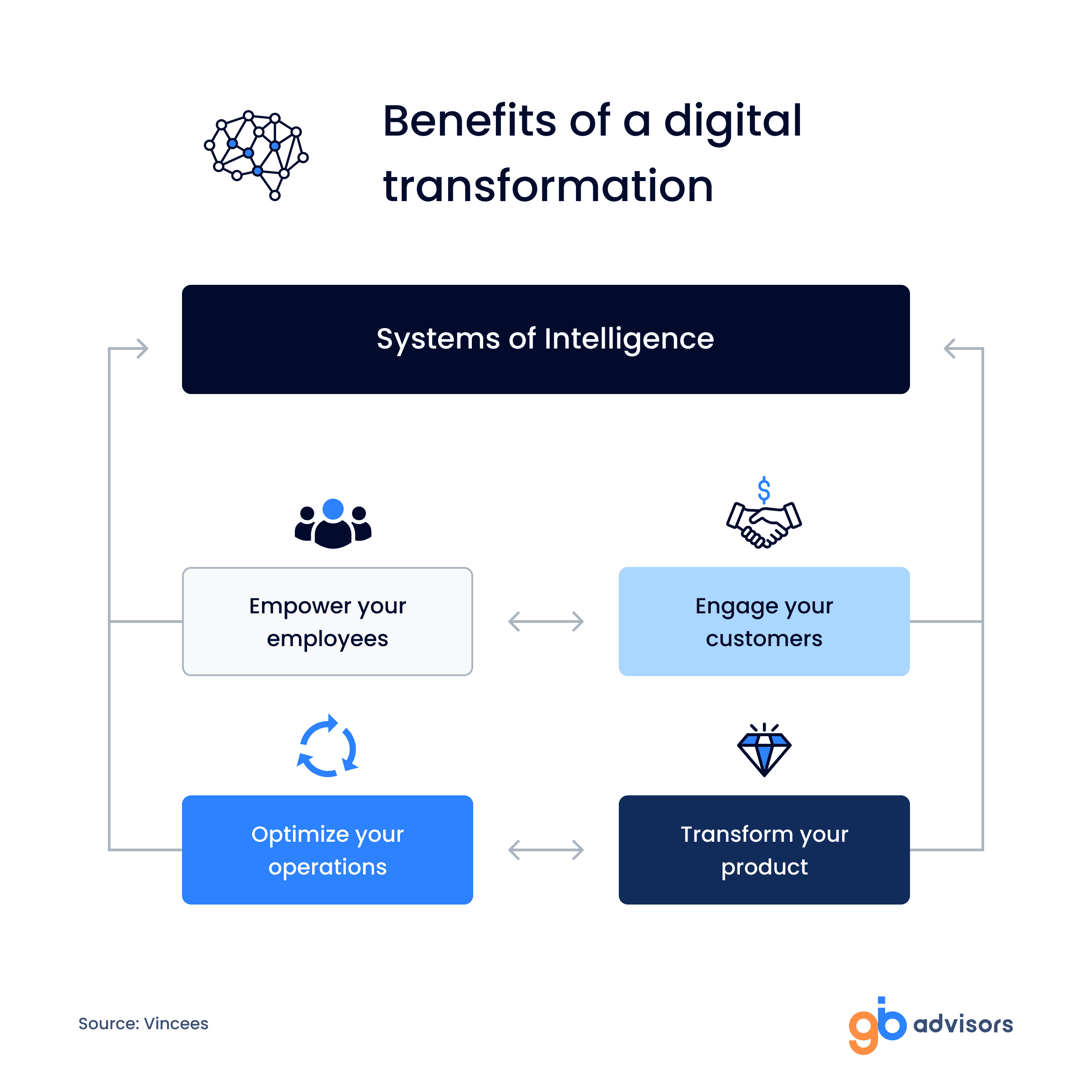
How are companies achieving a successful digital transformation?
Companies are adopting various strategies and technologies to drive their digital transformation. While the situation may vary by industry, company size, and geographic region, some general trends and common approaches are:
Automation and Artificial Intelligence (AI)
Companies continue to invest in process automation, improve efficiency, and reduce costs. AI and machine learning are used to:
- Analyze large volumes of data.
- Predict trends.
- Personalize the customer experience.
- Boost employee productivity.
- Improve workload management.
- Advanced cybersecurity.
With cyber threats on the rise, digital security is a priority. Enterprises are implementing advanced cybersecurity solutions such as multifactor authentication, data encryption, and artificial intelligence to detect and prevent threats in real-time.
Immersive technologies
Augmented reality (AR), and virtual reality (VR) are becoming important tools for employee training, improving customer experience, and creating new sales and marketing channels.
Blockchain
Although initially associated with cryptocurrencies, blockchain is finding applications in supply chain management, data security, identity management, and more, offering transparency, security, and efficiency.
Internet of Things (IoT)
Enterprises are implementing IoT to collect real-time data from connected devices. This enables better decision-making, optimization of operations, and development of new products and services.
Remote work and digital collaboration
Remote working has become the norm for many companies, driving the adoption of digital collaboration tools, project management software, and online communication solutions to keep teams productive and collaborative.
Data-driven strategies
Companies are adopting more sophisticated approaches to data analytics. Today, technologies such as big data and predictive analytics are used to:
- Improve decision-making.
- Identify new market opportunities.
- And personalize product and service offerings.
- Sustainability and social responsibility.
Digital transformation is also being seen as a way to achieve sustainability goals. Companies are now using technologies to monitor and reduce their environmental impact, improve energy efficiency, and promote ethical business practices.
Cloud computing
Migration to the cloud has accelerated as it offers flexibility, scalability, and cost efficiency. Companies adopt hybrid cloud or multi-cloud models to take advantage of the best of different cloud platforms. This ensures business continuity and resiliency at the same time.
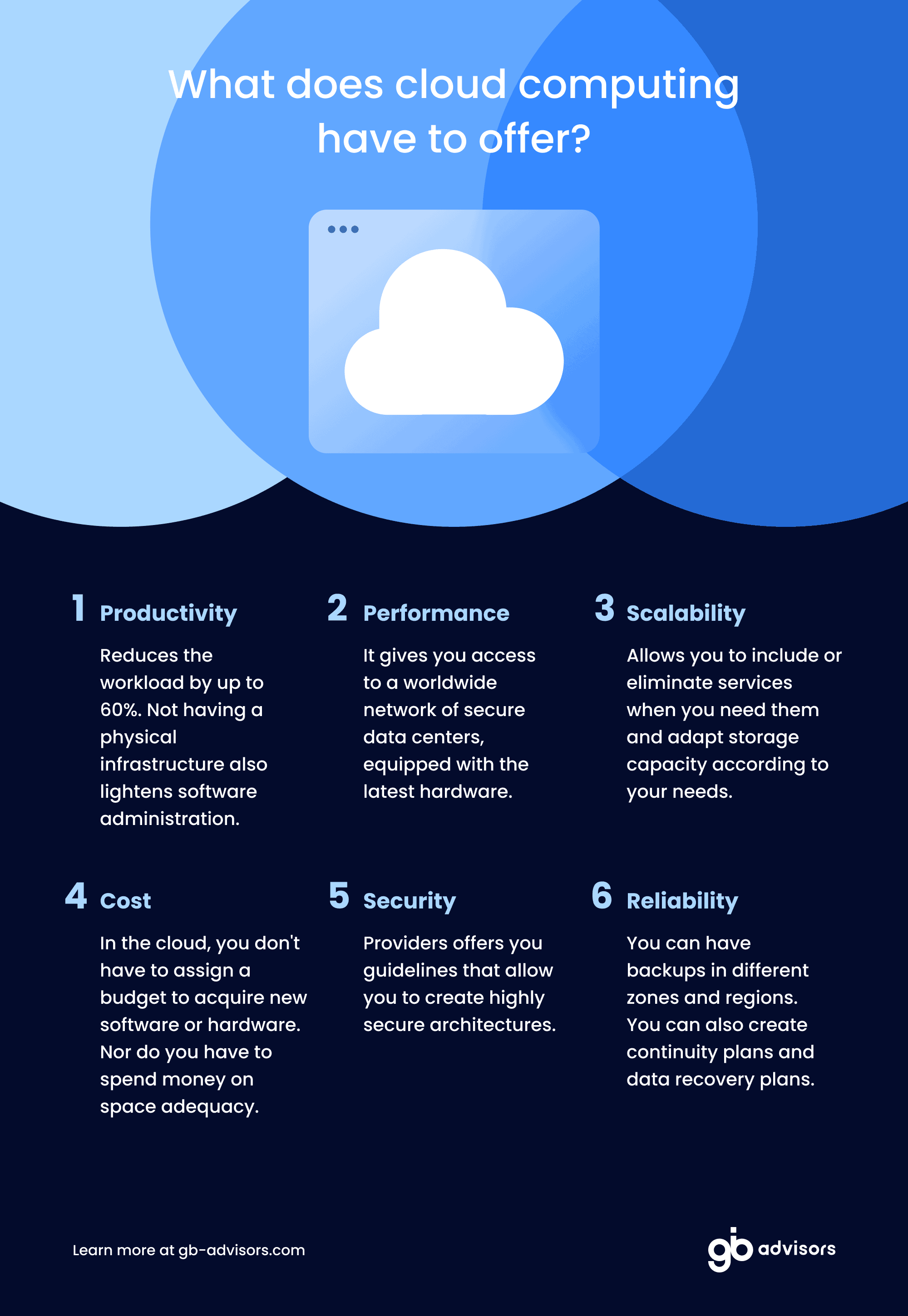
Steps for a successful digital transformation
Before embarking on this transition, keep in mind that digital transformation is an ongoing journey. Thus, companies must commit to constantly monitoring and improving their operations.
By taking the time to understand your current processes and your customers’ needs, you can ensure that you are making the most of your company’s resources.
You can do this by following these steps:
1. Internal and external analysis
Internal analysis of the company and external analysis of the market is essential to understand both the current position of the organization and the environment in which it operates. This two-way approach allows you to identify opportunities for improvement, threats from the environment, and internal strengths and weaknesses that need to be addressed. Here’s how to address each:
Internal company analysis
- Assessment of current technology infrastructure: Review existing IT systems, software, hardware, and other technology resources. Determine if they are scalable, secure and support digital transformation objectives.
- Digital skills: Identify staff digital skills and competency gaps. This can include everything from basic courses in handling certain tools to specialized skills such as data analytics, cybersecurity, and software development.
- Processes and operations: Examines how day-to-day operations are carried out and how they can be optimized or transformed through digitization. Look for manual processes that can be automated to increase efficiency.
- Organizational culture: Culture plays a crucial role in a successful digital transformation. It assesses the organization’s readiness for change, innovation, and adaptability.
Turn on the subtitles to enjoy the video!
External market analysis
- Market trends: Research current and emerging trends in your industry and how technology changes customer expectations and the competitive landscape.
- Competition: Analyze competitors to understand their digital offerings, strengths, and weaknesses. Identify areas where your company can differentiate itself or needs to improve to stay competitive.
- Regulations and standards: Stay abreast of rules and standards that affect your industry, especially those related to data privacy and cybersecurity.
- Opportunities and threats: Use tools such as PESTEL (Political, Economic, Social, Technological, Ecological, and Legal) analysis to identify opportunities and threats in the external environment.
2. Establish a clear vision
This phase is crucial because it provides direction and a sense of purpose to all levels of the organization. Here’s how to approach this step effectively:
Establish a clear vision
- High-level and future-oriented: The vision must be high-level and future-oriented. It should describe not only where you want your organization to be at the end of the digital transformation process, but also how to differentiate yourself in the marketplace.
- Alignment with the company’s values and mission: Any vision for a successful digital transformation must be aligned with the company’s core values and mission. This ensures consistency in decisions and actions throughout the organization.
- Clear and persuasive communication: Communicate the vision clearly, concisely, and persuasively to all stakeholders, including employees, customers, and partners. This is essential to gain their support and commitment to the transformation process.
Define concrete objectives
- Results-oriented: Objectives should focus on concrete results. These may be improving the customer experience, increasing operational efficiency, or developing new revenue streams.
- Prioritization: Since resources are limited, it is important to prioritize objectives according to their potential impact on the organization and their alignment with the overall digital transformation vision.
- Flexibility: While objectives should be clear and concrete, it is also important to maintain some flexibility to adapt to unexpected changes in the technology or market environment.
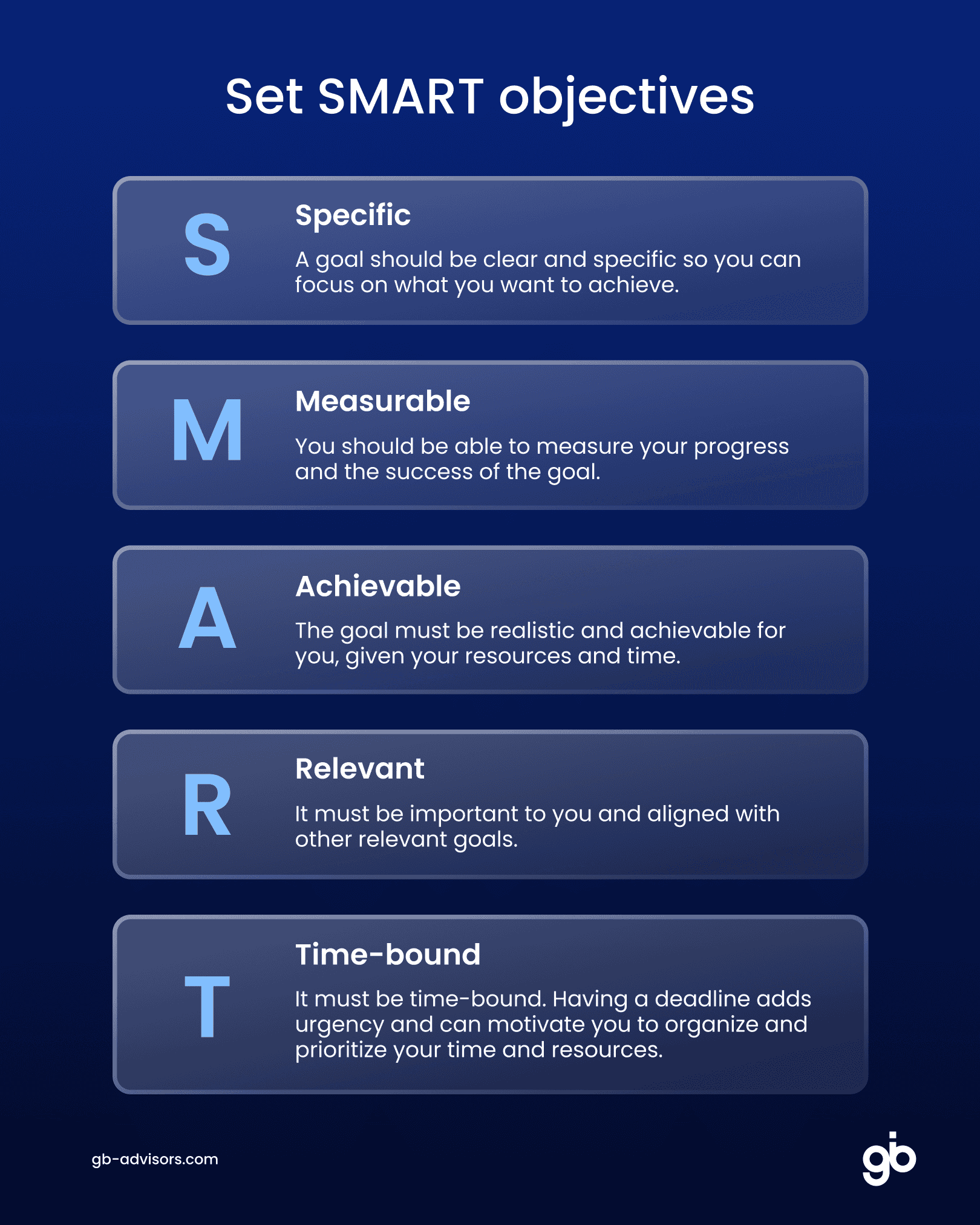
3. Develop an action plan
This plan should establish priority initiatives, taking into account manageable risks, and define key performance indicators (KPIs) to measure the progress of the transformation. Here’s how to effectively structure this step:
Define initiatives
Initiatives are concrete actions to achieve the proposed objectives. You must carefully assess their alignment with the overall digital transformation strategy, ensuring that each one contributes significantly toward the realization of the established vision.
- Risk and benefit analysis: For each initiative, assess both the potential benefit and the associated risks. It considers both financial and operational risks, as well as the impact on organizational culture.
- Ranking: Prioritize initiatives based on their alignment with the digital vision and defined objectives; the balance between risks and benefits; and the organization’s ability to implement the changes. Consider starting with projects that have “quick wins” to build momentum.
- Detailed planning: For selected initiatives, develop detailed project plans that include scope, timelines, budgets, resources needed, and those responsible for execution.
Definition of KPIs to measure progress
- Selection of KPIs: KPIs should be measurable and provide a clear indication of progress toward established objectives.
- Establishing baselines and targets: For each KPI, establish a baseline (the current starting point) and clear targets for the short, medium, and long term. This will provide a framework for assessing the progress and impact of digital transformation initiatives.
- Monitor and adjust: Implement tools and processes for continuous monitoring of KPIs. Use the data collected to evaluate the success of initiatives and make adjustments as needed. Flexibility to adapt the action plan in response to measured results is key to long-term success.
4. Manage and communicate change
This step is crucial to ensure buy-in, commitment, and cooperation throughout the transformation process.
Communicate the change
- Develop a communication plan: Create a communication plan that details the key messages, the channels to be used, and the communication schedule. Be sure to tailor messages to different stakeholder groups to address their specific concerns and expectations.
- Be transparent and honest: Keep stakeholders informed about progress. Transparency builds trust and support for the process.
- Two-way communication: Encourage two-way communication by allowing employees and other stakeholders to express their questions and concerns. Use surveys, question-and-answer sessions, and discussion forums to gather feedback.
Educate and train
- Identify training needs: Assess employees’ current digital skills and determine areas where training is needed to meet digital transformation requirements.
- Develop training programs: Design and implement training programs that both build technical skills and develop a digital mindset.
- Support continuous learning: Promote a culture of continuous learning by providing access to learning resources, such as online courses, workshops, and webinars. Consider establishing mentoring and coaching programs.
Support during the transition
- Establish support teams: Create dedicated support teams to help employees navigate the changes. This can include technical support, as well as advice on new processes and work practices.
- Manage resistance to change: Identify resistance to change and address it proactively. Listen to stakeholder concerns and work to mitigate them. Recognizes and celebrates individual and team achievements to foster a positive attitude toward change.
- Monitor and adjust: Use stakeholder feedback to monitor the impact of change and make adjustments to the communication, education, and support strategy as needed.
5. Continuous improvement
A successful digital transformation cannot be understood as a project with a defined start and end. It is an ongoing process because technology and customer needs are constantly evolving.
The simplest and most practical way to ensure continuous improvement, especially if you are looking for something that can be implemented quickly and with tangible results, would be to adopt the Kaizen approach. Here are its steps:
Training and culture:
Start by educating your employees on the principles of kaizen. The idea is to foster a culture of continuous improvement where every team member feels empowered to contribute.
Conduct workshops or training sessions to introduce the concept of Kaizen and how each employee can identify opportunities for improvement in their daily work.
Small continuous improvements:
Encourage employees to identify small areas of improvement in their daily processes. These do not need to be major changes; even minor modifications can have a significant long-term impact.
Encourage the idea that there is no improvement “too small.” This may include:
- Simplifying a form.
- Reorganizing the workspace to improve efficiency.
- Or improving a small part of a work process.
Implementation and feedback:
Allow employees to implement these small improvements or present them to management for quick approval.
Establish a system for collecting feedback and monitoring the impact of these improvements. This can be as simple as regular meetings to discuss changes and their effects.
Recognition and motivation:
Recognize and celebrate improvements, regardless of their size. This motivates employees to continue to look for ways to improve their work.
It can be helpful to have a bulletin board, internal newsletter, or regular meetings where these accomplishments are highlighted.
Continuous review and adjustment:
Regularly review the changes implemented to make sure they are providing the desired results.
Maintain a flexible approach, allowing you to adjust or reverse changes if they do not generate the expected benefits.
Conclusion
Ultimately, successful digital transformation is a strategic and multifaceted journey that requires commitment, adaptability, and a clear vision. It is not just about adopting new technologies, but about reimagining operations, processes, and business models to create added value and enhance the customer experience in a digital world.
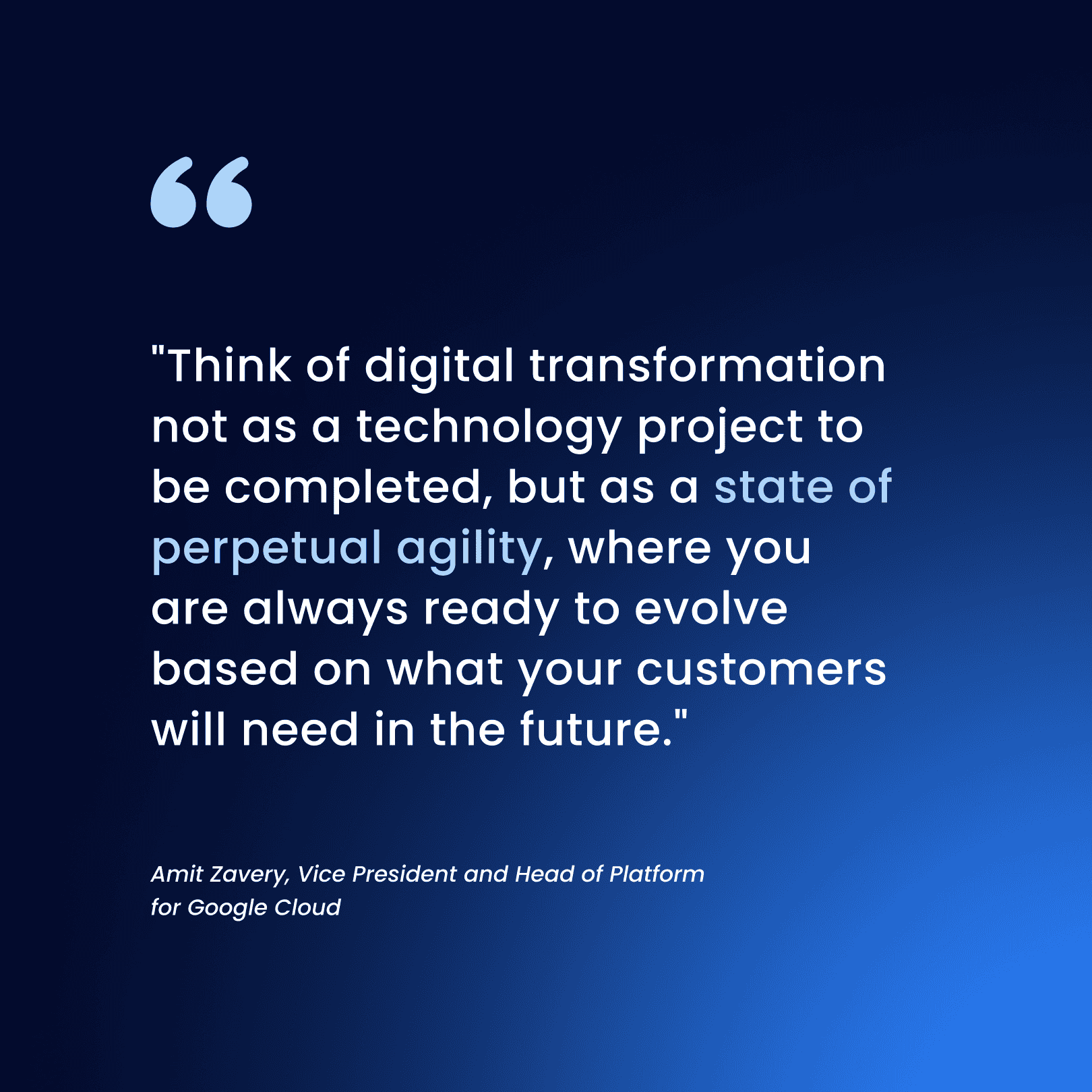
Digital transformation is a cornerstone that must be coordinated by leaders in all areas, always supported by intelligent systems that facilitate the management of their tasks.
If you want to start now the digital transformation of your business, our team of experts is ready to help you. Contact us and receive a free consultation.

